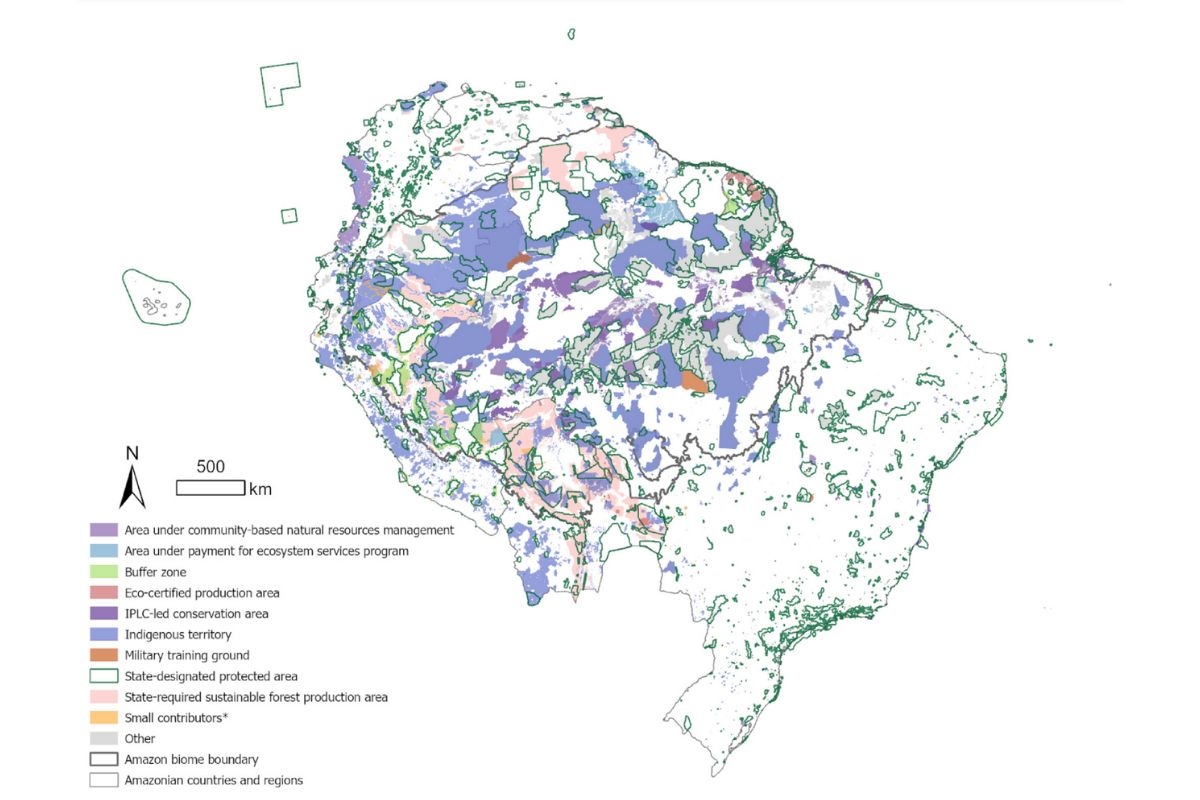
A novel approach to tracking conservation reveals more areas may be conserved than currently accounted for
Thirty by thirty. It’s an ambitious answer to growing calls for protecting more of our planet’s surface. The goal is to conserve 30% of the Earth’s oceans, lands and freshwaters by 2030. While this may seem a lofty aim, the diversity and coverage of conservation areas today might be greater than what’s currently recognized by global tracking systems.
An international team of conservation researchers and practitioners, led by scientists at UC Santa Barbara and The Nature Conservancy, has developed an inclusive inventory approach for tracking global conservation areas, with an emphasis on local data and expertise. Applying this approach across the nine countries spanning the Amazon Rainforest identified a wide array of conservation areas with greater diversity and area coverage than existing tracking systems showed. The team published their findings in the journal One Earth.
The study offers empirical guidelines for how different actors — including researchers, governments, non-state actors and donors — can embrace this broader scope of area-based conservation in research and decision-making. “The baseline data generated from this inventory will also allow researchers to assess the relative effectiveness of different types of conservation governance systems,” said co-lead author Yifan He, a doctoral student at UC Santa Barbara’s Bren School of Environmental Science & Management.
Successfully conserving 30% of Earth’s surface by 2030 will require properly recognizing and tracking existing conservation efforts. In contrast to current tracking systems, the authors claim that their approach will provide a more comprehensive starting point for discussing what should count towards a nation’s progress in achieving its share of the 30% target.
“It is important to ensure inclusivity and transparency around the criteria and the decision-making process,” said study co-lead author Siyu Qin, a researcher at The Nature Conservancy. “Knowing who is governing these lands and how, as well as recognizing their visions related to conservation, is the first step to collectively planning for a fair and feasible future for our planet.”
Despite efforts to expand their scope, current tracking systems still omit many forms of area-based governance related to conservation. For example, these systems do not recognize community-based natural resources management, payment for ecosystem services programs, or eco-certified production areas. Often this is a result of deficient data or reliance on government reporting.
The authors’ proposal identifies conservation areas through sources such as the scientific literature, legal documents and knowledge from Indigenous peoples and local communities. They demonstrated the usefulness of the proposed approach by comprehensively mapping area-based conservation in the Amazonian countries (Bolivia, Brazil, Colombia, Ecuador, French Guiana, Guyana, Peru, Suriname and Venezuela).
Further, they researchers identified a broad scope of area-based conservation governance systems that collectively cover more than 40% of land in these countries; official databases from the same period estimated only a 28% area coverage. Additionally, the official databases also contained fewer types of governance systems: “Some countries are missing two, others are missing up to seven,” said He.

“Progress has been made in the official recognition of diverse conservation areas, including ‘Other Effective Conservation Measures’ in the Global Biodiversity Framework. However, many areas contributing to biodiversity conservation remain unrecognized in official databases due to specific reporting processes and differing objectives of site owners,” said He. “Thus, we need complementary, society-led approaches to acknowledge these areas and direct resources to them.”
The authors also noted that, globally, about 45% of lands are customarily held, and potentially conserved, by Indigenous peoples and local communities. In addition, at least 220,000 square kilometers (around 85,000 square miles) of forests around the world — an area roughly the size of Utah — have been set aside for conservation under the Forest Stewardship Council eco-certification. About 150,000 km2 (58,000 mi2) comprise biodiversity offset projects. Pathways to support, assess and count these areas toward conservation targets remain to be clarified.
Many nations have committed to conserve 30% of global lands and water by 2030. In fact, the 30x30 initiative was codified as Target 3 of the 2022 Kunming-Montreal Global Biodiversity Framework, as agreed through the Convention for Biological Diversity. Achieving these goals will require understanding what forms of area-based conservation already exist, how much and where.
“We hope this inventory approach can be a starting point for conservation planning efforts,” explained He. “Before deciding where to create new conservation areas or how to prioritize limited resources, we first need to understand what is already out there and how these sites are governed.”
Harrison Tasoff
Science Writer
(805) 893-7220
harrisontasoff@ucsb.edu



